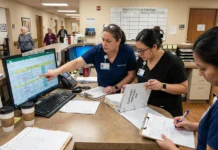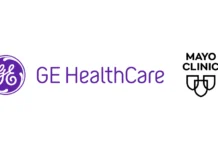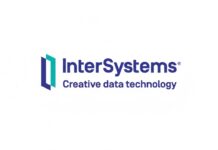Healthcare executives rarely contemplate experiencing ransomware attacks until confronted with immediate crises where critical systems become inaccessible, patient care operations deteriorate, and attackers demand payment for system restoration. Yet ransomware has become the predominant threat facing healthcare organizations, with attacks occurring daily across every sector of the healthcare ecosystem. The 2024 Change Healthcare attack that paralyzed pharmacy operations, revenue cycle systems, and clinical workflows across the United States demonstrated the catastrophic consequences when ransomware strikes healthcare infrastructure. For healthcare executives facing such crises, the decisions made during the first hours and days following system compromise will determine whether organizations emerge with manageable impact or face existential operational and financial consequences. Understanding healthcare ransomware executive privacy implications and crisis decision-making frameworks proves essential for contemporary healthcare leadership.
Ransomware targeting healthcare organizations operates distinctly from attacks against other sectors because healthcare cannot simply await system restoration. Hospitals must continue operating even when their primary information systems become inaccessible. Pharmacy staff must dispense medications without computerized tracking systems. Emergency departments must treat patients without access to medical histories or diagnostic results. Intensive care units must manage ventilators and infusion pumps without monitoring systems. Surgical teams must make critical decisions without imaging results. The clinical imperative to continue patient care despite system failures creates unique pressures that force executives into catastrophic decision scenarios absent in other industries.
The Immediate Crisis Cascade
When ransomware infects healthcare infrastructure, the initial hours create organizational chaos where systems fail cascadingly and executives face simultaneous operational, clinical, financial, and regulatory crises demanding urgent decisions. Cybersecurity teams work frantically to contain infection spread and assess damage scope. Clinical leadership struggles to determine which patient care functions can continue without IT systems and which require urgent intervention. Finance teams grapple with revenue cycle disruption and operational cost implications. Communications teams field inquiry storms from concerned patients, providers, and media. Throughout this chaos, executive decision-making must balance immediate clinical needs, operational survival, and longer-term organizational interests.
Healthcare executives must determine immediately whether to operate clinical systems in manual fallback modes, whether to divert emergency patients to other facilities, whether to cancel elective procedures, and whether to implement crisis protocols requiring manual charting, paper-based ordering, and telephone-based communication. These decisions carry patient safety implications because manual operations eliminate many protective systems preventing medical errors. Yet continued system-dependent operations may prove impossible when ransomware has encrypted critical functions.
The immediate crisis decision regarding healthcare ransomware executive privacy involves assessing whether organizations experienced data theft alongside encryption. Modern ransomware variants implement double-extortion tactics where attackers encrypt systems and simultaneously exfiltrate sensitive data. Executives must determine whether confidential patient information, employee records, financial data, or proprietary information has been stolen. This assessment determines whether executives face ransomware response focused solely on system restoration or more complex scenarios involving breach notification obligations, regulatory reporting requirements, credit monitoring for affected individuals, and potential extortion demands regarding stolen data.
The Ransom Payment Dilemma
Healthcare ransomware crises inevitably raise the fundamental question of whether organizations should pay attacker-demanded ransom to restore systems. This decision encompasses ethical dimensions, legal considerations, financial implications, and patient safety consequences. Federal authorities advise against ransom payment, noting that payments fund criminal enterprises and encourage ongoing attacks. Yet healthcare organizations facing system outages affecting patient care often conclude that prompt system restoration takes precedence over ethical concerns about funding criminals.
The ransom payment decision becomes particularly agonizing when system outages directly threaten patient lives. Change Healthcare’s attack disrupted pharmacy operations across the United States, creating scenarios where patients could not access critical medications. Ascension Health’s ransomware attack forced hospitals to operate manually, creating medical error risks and operational challenges. In these contexts, executive calculations about ransom payment incorporate patient safety considerations creating unique pressure dynamics absent in other sectors. Executives who refuse ransom payment understand they bear personal responsibility if patient harm results from prolonged system outages.
Healthcare organizations facing ransom demands must navigate complex legal landscapes where different regulatory frameworks and insurance policies apply. Federal law prohibits payment to certain sanctioned entities, yet healthcare organizations often lack adequate information to determine attacker nationality or sanctions status. Insurance policies covering ransomware may include ransom payment coverage provisions but often contain exclusions or conditions affecting coverage. Executives must consult legal counsel and insurance representatives while simultaneously managing operational crises, creating scenarios where inadequate time and information inform critical decisions.
The ransom payment amounts demanded in healthcare attacks have escalated dramatically. The Change Healthcare attacker demanded approximately $22 million, though organizations have reportedly paid amounts exceeding $40 million in other attacks. These sums represent catastrophic financial blows for most healthcare organizations, yet executives must weigh payment costs against system restoration timelines, operational losses during outages, and patient safety implications of prolonged disruption. Some organizations conclude that modest ransom payments enabling rapid system restoration produce better outcomes than extended outages causing massive operational losses.
Patient Safety and Operational Continuity
Ransomware attacks confronting healthcare executives with the most agonizing crisis dimensions involve system failures directly affecting patient care. Pharmacy systems become inaccessible, requiring manual medication tracking with increased error risk. Electronic health records go offline, requiring providers to make clinical decisions without access to medical histories, medication lists, or diagnostic results. Laboratory systems fail, preventing result reporting for critical tests. Blood bank systems become unavailable, complicating transfusion operations. Intensive care monitoring systems fail, forcing nurses to rely on bedside parameters for patient observation.
Healthcare executives must implement crisis protocols enabling clinical operations to continue during system outages. These protocols typically include paper-based systems, manual charting, telephone-based consultations, and emergency medication access procedures. Yet manual operations prove far less efficient than computerized systems and create medical error risks absent during normal operations. Executives face impossible choices between continuing operations with elevated error risks or suspending services affecting patient care access.
The psychological impact on clinical staff operating in crisis mode affects patient safety and organizational recovery. Healthcare workers performing manual procedures usually handled by computerized systems experience heightened stress, fatigue, and error risk. Operating for extended periods without normal IT support systems creates frustration and potential for staff errors. Executive leadership must balance demands for rapid system restoration against reasonable timelines for clinical staff adaptation to crisis operations.
Regulatory Notification and Accountability
Healthcare executives managing ransomware crises must navigate complex regulatory obligations for breach notification. When ransomware involves data theft, executives bear HIPAA notification obligations requiring notification to affected individuals, media, and regulatory authorities. These notifications must occur within regulatory timeframes (typically 60 days) regardless of whether system restoration remains incomplete. The notifications create operational demands for identifying affected data, determining notification requirements, and managing notification logistics during active crisis response.
The Office for Civil Rights increasingly investigates healthcare ransomware attacks, examining whether organizations implemented adequate security measures preventing compromise. Executives may face investigations determining whether security controls were sufficient and whether organizations complied with HIPAA Security Rule requirements. Inadequate security governance creating preventable vulnerabilities can result in regulatory penalties, mandatory audit periods, and corrective action mandates.
Executives may also face personal accountability through multiple pathways. State attorneys general sometimes pursue healthcare executives for consumer protection violations or fraud. Class action lawsuits by affected individuals seek damages for identity theft risks and privacy breaches. Regulatory agencies may hold executives personally liable for governance failures enabling attacks. This personal accountability dimension creates additional pressure on executive crisis decision-making beyond organizational interests.
Post-Incident Recovery and Executive Leadership
Healthcare ransomware recovery extends far beyond technical system restoration. Organizations must restore trust with patients whose privacy was compromised, employees traumatized by crisis experience, clinicians frustrated by operational disruptions, and communities uncertain about care safety. Executive leadership during recovery determines whether organizations emerge stronger with enhanced security cultures or weakened with persistent vulnerability and demoralized staff.
Effective post-incident leadership requires executives to communicate transparently about attack circumstances, response measures, and security improvements preventing recurrence. Executives must acknowledge patient and staff concerns while providing credible assurance about enhanced security. Leadership must allocate resources for security improvements and employee support, signaling organizational commitment to preventing similar incidents.
Healthcare executives should view ransomware attacks as catalysts for organizational security transformation. Organizations experiencing significant attacks often invest substantially in security improvements, implement formal governance structures, and develop security cultures previously absent. Executives who leverage crisis experiences as opportunities for comprehensive security enhancement position organizations for enhanced resilience.
Preparing for the Inevitable Crisis
Given ransomware’s prevalence and persistence, healthcare executives should assume their organizations will experience attacks rather than hoping to avoid them. Thorough crisis preparation including tabletop exercises, incident response plans, communication strategies, and governance frameworks enables more effective response when attacks occur. Organizations with established incident command structures, pre-authorized decision procedures, and clear executive authority lines respond more effectively than those making up approaches under crisis pressure.
Healthcare executives should participate personally in security governance and crisis preparation rather than delegating entirely to IT security staff. Board participation in security discussions, executive participation in crisis exercises, and leadership engagement with security cultures demonstrate organizational commitment while improving executive preparedness for the inevitable crises.
Conclusion
Healthcare ransomware crises place executives in agonizing decision scenarios where choices regarding patient safety, organizational survival, financial consequences, and personal accountability intersect under extreme time pressure and information uncertainty. There are no good options when ransomware compromises critical healthcare infrastructure—only choices carrying different combinations of risks and consequences. Healthcare executives who prepare thoroughly for crises, maintain clear ethical frameworks, prioritize patient safety, and act decisively while remaining adaptable position their organizations for crisis survival and recovery. The decisions healthcare executives make when systems fail and lives hang in balance define both organizational futures and personal professional legacies.


















